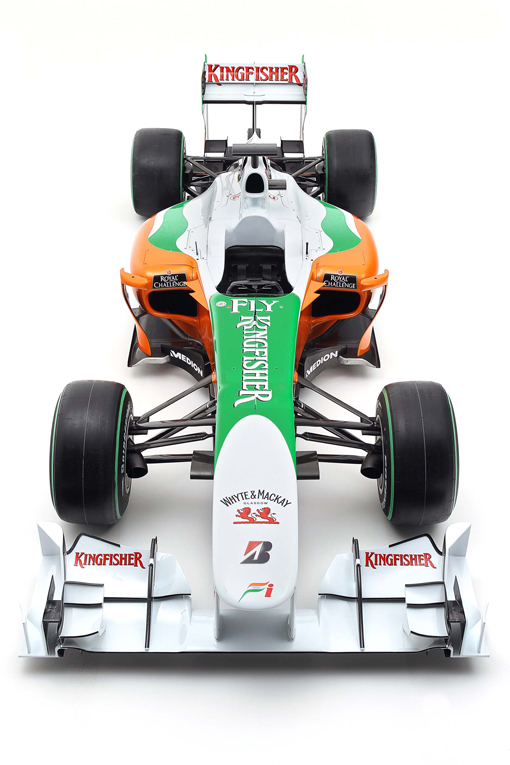
A new Formula One season is upon us once again and with new drivers joining an expanded grid featuring new teams, this year’s world championship is likely to be the most unpredictable and exciting in the past six decades of the sport.
Entertaining the fans has become the number one priority as outlined by the sport’s governing body (the FIA) and the teams (FOTA) for 2010. With the KERS system dropped due to poor uptake (not to mention added weight), a new approach to racing has been introduced with significant changes to the Formula One rulebook.
Refuelling is now banned for the first time since 1993. This radical move to abolish fuel stops should improve on-track action, encouraging the drivers to overtake one other instead of relying on pit-stop strategies to gain track position. It will be intriguing to see the differences in performance due to the fuel levels. The cars will start off heavy (around 160kg of fuel) but as the race progress, the cars will go faster and faster as the fuel levels goes down. As for pit-stops, expect to see lighting-fast tye changing. The Williams team in particular have been practising and can change all four sets of tyres in three seconds!
A new points system has also been ratified for this season, in response to the increased grid and encouraging the drivers to overtake. Since 2003, points had been awarded to the top eight finishers with ten points for the winner, eight for second, six for third and all the way down to one for eighth place. For 2010 the winner will be awarded 25 points, 18 for second, with third receiving 15, 12 for fourth and then ten, eight, six, four, two, and one for tenth place.
As for qualifying, yet another change has been added to the three-part session due to more cars taking part. Qualifying one and two will see eight drivers eliminated in each with the remaining ten going for pole position in session three. However in qualifying three, the cars will run in low-fuel configuration but the drivers must use the same tyres into the race. This particular rule change will play a significant part in race strategies. Will the drivers conserve their tyres in the top-ten shootout by pacing themselves in order to have better grip at the start of the race but risking the penalty of a low grid position? Or should they just go for glory by claiming the best spots but be handicap at the beginning of the Grand Prix without any decent tyre performance?
Slick tyres supplied by Bridgestone remain but the drivers will now have just eleven sets of tyres over the Grand Prix weekend, down from fourteen in 2009. One set is to be returned before second practice and two before third practice. The top ten qualifiers must start the race on the partially used set with which they set their best lap time in Q3.
Time penalties added to a driver’s elapsed race time have been modified. A drive-through imposed in the last five laps will now incur a penalty of 20 seconds, while ten-second penalty will see 30 seconds added. Previously, both were penalised by an additional 25 seconds. As for serving these penalties during the race, previously the drivers could complete up to three laps before serving a drive-through or ten-second penalty. The rules have now changed to reduce this to just two laps, which minimises any advantage a driver can obtain before taking his punishment.
As for the aesthetics, the larger fuel tank has made the 2010-spec Formula One racing cars into limousines! With the weight of the car increased from 605kg to 620kg. Not to mention a narrower front tyre (from 270mm to 245mm in width – shifting the ideal weight distribution rearwards relative to 2009) has given the overall appearance of these cars a unique look when compared to last season, but at least those ugly wheel-rim covers have been banned! As for the controversial double diffuser, these sophisticated aero devices remain but it might harm the close racing aspect due to the ‘dirty air’ turbulence…
In terms of the drivers and teams taking part this season, it’s great to see the most successful driver of the modern generation – Michael Schumacher – back in Formula One. His neck injury that prevented him in taking part mid-season in 2009 is now gone and despite being the oldest driver on the grid (Schumacher turned 41 last January), his level of fitness and desire is as strong as ever. It will be fascinating to see the seven-time world champion racing against young pretenders with the likes of Lewis Hamilton, Jenson Button and Sebastian Vettel. In fact, it’s fantastic to see four world champions (Schumacher, Alonso, Hamilton and Button) racing on the same piece of race track. As for the teams, four new outfits have join the establishment with the famous Lotus name making a re-appearance alongside Virgin Racing, Campos Meta 1 and USF1 although the latter is facing an uphill struggle in taking part in the very first race due to financial difficulties. Stefan GP could step-in if the American-based squad drops out.
Read More



















